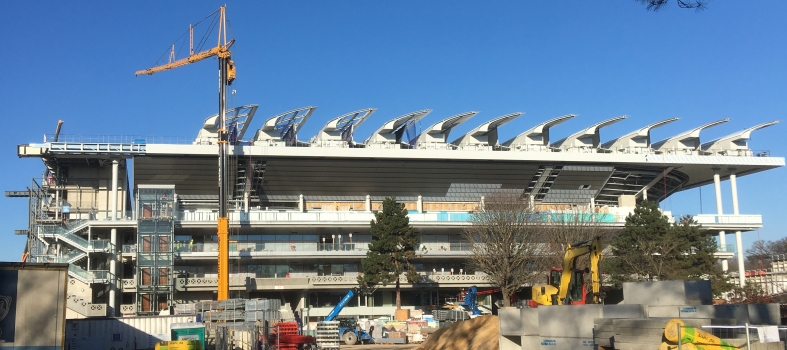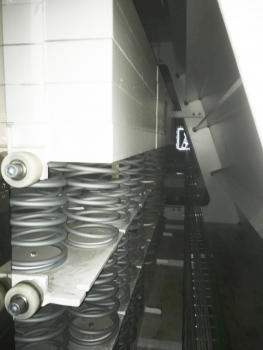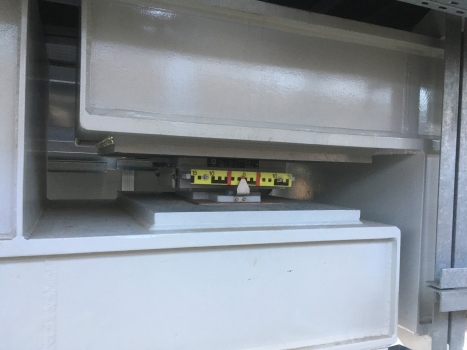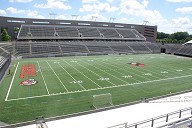8-ton mass dampers for the tennis elite in Paris
At the next Grand Slam in Paris, the top matches will take place without breaks due to rain – thanks to a new retractable roof. MAURER equipped the slender steel construction with dampers which immediately respond to vibrations: to enable closing and opening of the roof without noise emission and to prevent material fatigue.
Media
New roof above the center court of Roland Garros must not vibrate
The Roland Garros tennis stadium in Paris was the last Grand Slam arena without a roof, thus making the French Open weather-dependent to the final. Now the central and largest court “Philippe Chatrier” is equipped with a retractable cover and was completely reconstructed. The expansion to 15,000 seats is the centerpiece of several years of reconstruction at Roland Garros, scheduled to be completed in 2020.
The roof consists of 11 steel box girders, one of them fixed and the others movable. Each of them supports an approx. 3 m high, inclined and slightly curved “wing” serving as a rain shield. These wings make the tennis court rainproof within 15 minutes. They are moved by gears on a gear rack that rests on the outer shell of the arena.
However, noise emission must be avoided in the process in order not to disturb the tennis stars. Clattering, squealing or even rumbling had to be prevented – and all that with steel girders featuring a length of more than 100 m. Especially wind-induced vibrations in the steel construction had to be damped. Besides the retracting comfort, the service life was an issue as well: preferably the material should not vibrate at all to prevent fatigue and to avoid cracks and breakage.
Lack of space: extremely slender damper geometry
For this reason, the ten steel girders were equipped with vertical vibration dampers (TMD – Tuned Mass Damper). These TMDs have a mass block resting on steel coil springs. The vibration of the mass counteracts the structural vibrations in vertical direction, thus reducing the vibrations by factor 2–8. The required dimensions of the vibrating TMD mass crucially depend on the mass of the moving structure. In Paris, each steel girder needed a TMD with eight tons of vibrating mass – but where can this mass be accommodated given the slender steel girder geometry? “We have placed the eight tons into the steel girders,” explains project manager Luca Paroli from MAURER. “This was admittedly a challenge since the geometry of the long, slender girders was specified.” So, the damper geometry was elaborately adapted to the steel boxes.
Eigenfrequency: individual on-site adjustment
For the TMDs to function, they have to be precisely adjusted to the eigenfrequency of the girders. The frequency had been pre-calculated from stiffness and mass, however, especially the girder stiffness is subject to production-related alterations, the deviations mainly caused by screws and welding seams.
To this end – after the new roof had been mounted – every single steel girder was measured, and the damper adjusted accordingly. For this purpose, MAURER provided different spring sets that were exchanged depending on the measurement results. With a tolerance of only ±1 %, the dampers are now very precisely adjusted. In addition, the internal friction in the vertical guides of the TMD mass are negligible.
These two issues, highly precise frequency setting and low friction, ensure the maximum possible damping efficiency: even in case of minor structural movements, the TMDs respond immediately and feature a very high coefficient of performance.
Bearings: elastomeric, spherical and uplift
In addition, MAURER delivered the 20 bearings underneath the steel girders. Initially planned were elastomeric bearings only, however, this failed due to lack of space. This is why the elastomeric bearings were partly replaced by considerably smaller MSM® Spherical Bearings. These bearings have a calotte inside that can accommodate rotations around all axes like a spherical joint without significant resistance. Between the bearing elements, two 8 mm thick discs made of MSM® – MAURER Sliding Material – are installed to accommodate rotations and horizontal displacements. MSM® is capable of accommodating a much higher pressure than elastomeric bearings. Thus, the outline could be reduced by more than 30%. A positive side-effect of MSM® Spherical Bearings is their wear and ageing resistance. According to the technical approval, they have a certified minimum service life of 50 years.
Moreover, two of these spherical bearings were designed as uplift bearings, which means: they do not only accommodate pressure and rotations but uplift forces as well. This is particularly important when wind hits the moving roof. The uplift bearings are positioned underneath the second girder. At the same time, these specially designed bearings enable restraint-free transfer of vertical uplift forces in any rotation and displacement condition.
The owner of the stadium is FFT (Féderation Française de Tennis). The architect of the entire reconstruction is Cabinet ACD-Girardet, co-architect for the mobile roof is Cabinet DVVD. Engineering and construction of the project was carried out by the Joint Venture between VCF – Vinci Construction France and Cimolai SpA. Cimolai SpA is responsible for the steel construction of the tribunes and for the mobile roof. The last components were installed in January 2020. The total reconstruction is scheduled to be completed in 2020.
References
Structure Types
- About this
data sheet - Product-ID
7670 - Published on:
25/05/2020 - Last updated on:
25/05/2020






 MAURER SE
MAURER SE 
